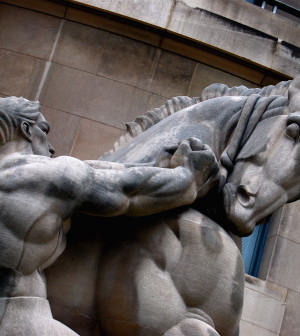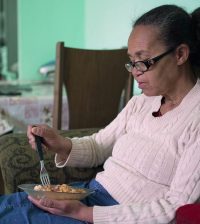- Skip Storing This Everyday Product in the Fridge Door
- Green Tea + B3 Pairing May Boost Brain Health
- Navigating Your Midlife Crisis: Embracing New Possibilities
- City Raccoons Showing Signs of Domestication
- Mapping the Exposome: Science Broadens Focus to Environmental Disease Triggers
- One Week Less on Social Media Linked to Better Mental Health
- Your Brain Changes in Stages as You Age, Study Finds
- Some Suicide Victims Show No Typical Warning Signs, Study Finds
- ByHeart Formula Faces Lawsuits After Babies Sickened With Botulism
- Switch to Vegan Diet Could Cut Your Greenhouse Gas Emissions in Half
Can’t Settle on a Menu Selection? Listen to Your Tablemates


FRIDAY, Oct. 25Your dinner companions may influence your food choices at a restaurant, according to a new study.
The study found that when a group of people go to a restaurant, they tend to select items from the same menu categories.
“My conclusion from the research is that people want to be different, but not that different,” study author Brenna Ellison, a food economist at the University of Illinois, said in a university news release. “We want to fit in with the people we’re dining with. It goes against the expectation that people will exhibit variety-seeking behavior; we don’t want to be that different from others.”
Ellison analyzed three months’ worth of lunch receipts from a restaurant in Stillwater, Okla. In one section of the restaurant, guests received menus with items and prices only. Customers in another section received menus with calorie counts for each entree. Those in a third section received menus with the calorie count and a traffic-light symbol that indicated the calorie ranges of food items: green-light items had 400 calories or less, yellow-light items had 401 to 800 calories and red-light items had more than 800 calories.
“[Servers said] people talked about the traffic lights a lot,” Ellison said. “And we did find that larger tables that received the traffic-light menus did order fewer calories, on average, which suggests there was some peer pressure to order lower-calorie items.”
“The big takeaway from this research is that people were happier if they were making similar choices to those sitting around them,” she said. “If my peers are ordering higher-calorie items or spending more money, then I am also happier — or at least less unhappy — if I order higher-calorie foods and spend more money.”
“The most interesting thing we found was that no matter how someone felt about the category originally — even if it was initially a source of unhappiness, such as the items in the salad category — this unhappiness was offset when others had ordered within the same category,” Ellison said. “Given this finding, we thought it would almost be better to nudge people toward healthier friends than healthier foods.”
The study findings were presented at the recent annual meeting of the Agricultural and Applied Economics Association in Washington, D.C.
Research presented at meetings should be viewed as preliminary until published in a peer-reviewed journal.
More information
The U.S. Centers for Disease Control and Prevention has more about healthy eating.
Source: HealthDay
Copyright © 2025 HealthDay. All rights reserved.










